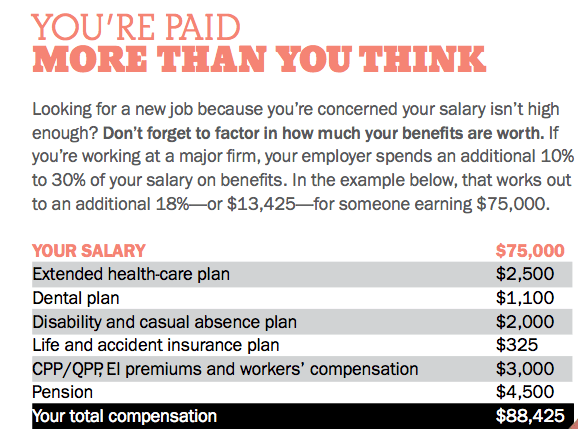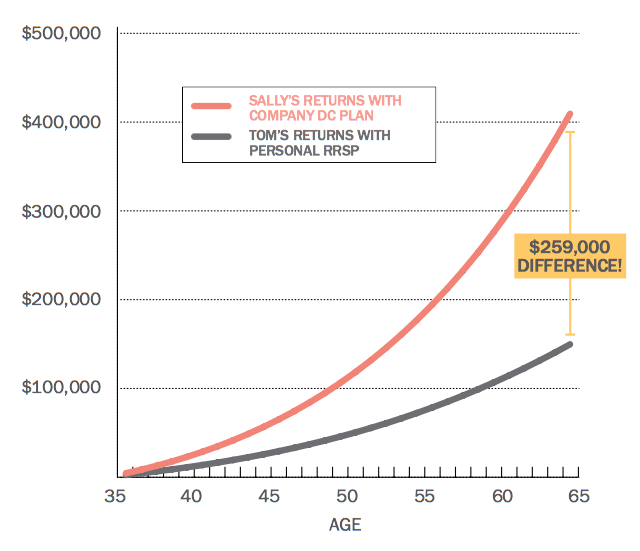Money for the taking
Employee benefits worth thousands of dollars could add 18% to your pay
Advertisement
Employee benefits worth thousands of dollars could add 18% to your pay
 Still, some people are hesitant to opt into any type of workplace program simply because they don’t trust their employer or the pension plan itself. That mistrust is unwarranted. Fred Vettese, chief actuary of Morneau Shepell, explains that defined contributions go into a trust fund that’s protected, even if the employer goes bankrupt. Although the investments reflect the market and will rise and fall like any other investment, poor employer performance won’t affect it. A lot of skeptical employees may also think there’s a catch when it comes to matching contributions in pension plans. (There’s not.)
But here’s some good news for pension procrastinators: If you haven’t previously enrolled in your company’s plan, some employers will allow you to “buy back” contribution room you’re eligible for. In other words, if you worked for one year before signing up, you might be allowed to contribute a set amount based on your salary and age. In some cases, the same applies to other periods when you may not have paid into the plan. These include: unpaid leaves of absence, maternity and parental leaves, or even periods of seasonal and contract employment before you were allowed to buy into the pension plan.
Buying back unused room not only increases the annual pension total, but could even allow you to retire a year or two early. Not sure if your company’s plan allows buybacks? If in doubt, ask.
Still, some people are hesitant to opt into any type of workplace program simply because they don’t trust their employer or the pension plan itself. That mistrust is unwarranted. Fred Vettese, chief actuary of Morneau Shepell, explains that defined contributions go into a trust fund that’s protected, even if the employer goes bankrupt. Although the investments reflect the market and will rise and fall like any other investment, poor employer performance won’t affect it. A lot of skeptical employees may also think there’s a catch when it comes to matching contributions in pension plans. (There’s not.)
But here’s some good news for pension procrastinators: If you haven’t previously enrolled in your company’s plan, some employers will allow you to “buy back” contribution room you’re eligible for. In other words, if you worked for one year before signing up, you might be allowed to contribute a set amount based on your salary and age. In some cases, the same applies to other periods when you may not have paid into the plan. These include: unpaid leaves of absence, maternity and parental leaves, or even periods of seasonal and contract employment before you were allowed to buy into the pension plan.
Buying back unused room not only increases the annual pension total, but could even allow you to retire a year or two early. Not sure if your company’s plan allows buybacks? If in doubt, ask.
WATCH: WTF is an Employe Stock Plan?[bc_video video_id=”6023926376001″ account_id=”6015698167001″ player_id=”lYro6suIR”]

Share this article Share on Facebook Share on Twitter Share on Linkedin Share on Reddit Share on Email